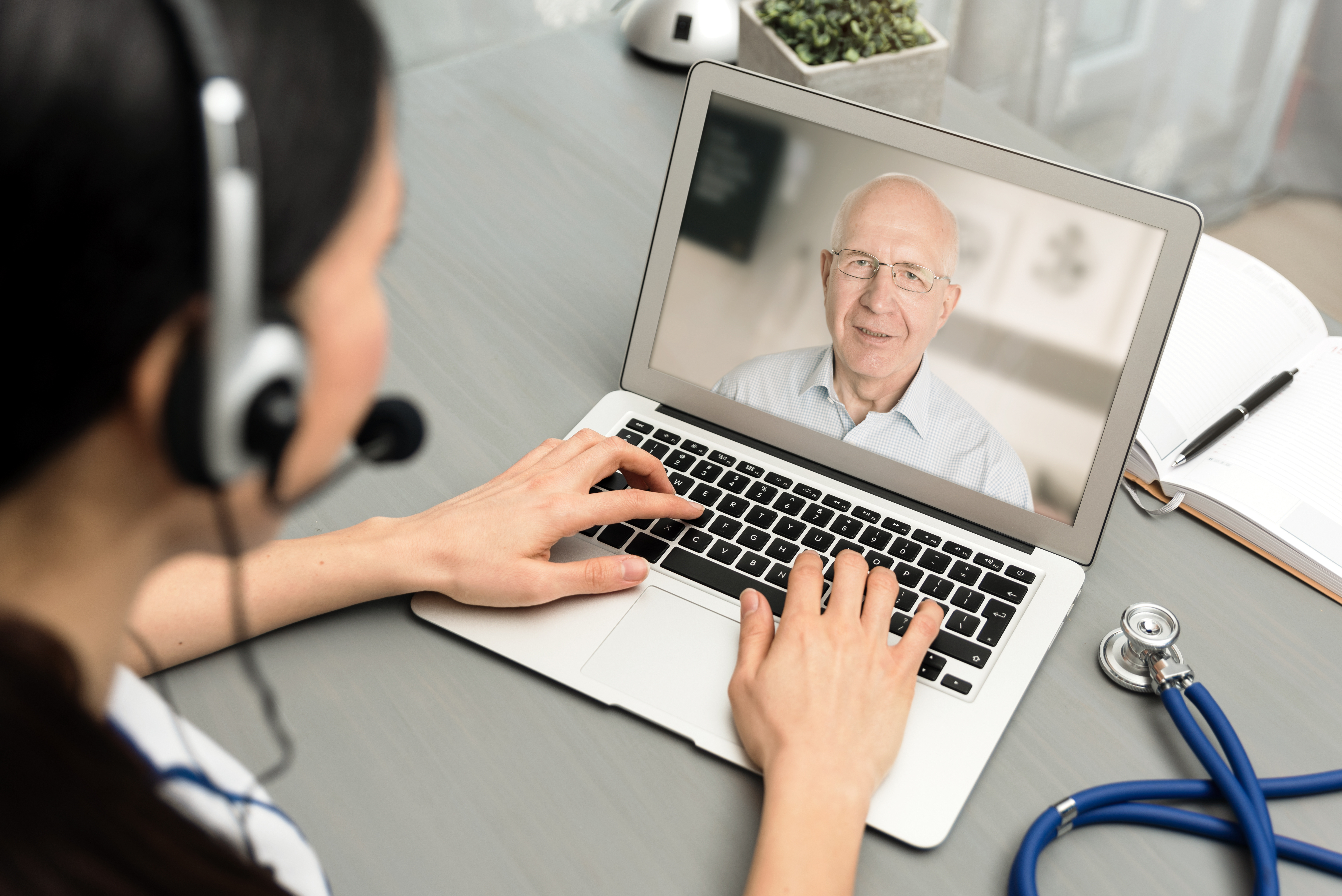
Retirement communities, assisted living facilities, and nursing homes house the country’s largest population of individuals with chronic health conditions. Senior citizens experience multiple barriers to receiving the timely, specialized care they require. Mobility issues, weakened immune systems discouraging travel, and lack of transportation all contribute to a historically underserved subset of the population.
COVID-19 has supercharged the rate at which telehealth services are being brought to seniors to solve these issues. With more senior living communities experiencing the benefits of 24/7 specialized remote care, there are fewer ER visits, readmissions, and unnecessary exposures to illness for this vulnerable group.
Seniors can often receive all their routine care in the comfort of their homes, where they’re safest and most likely to comply with a physician’s recommendations. Field healthcare professionals can use lightweight and mobile diagnostic tools to gather data to send to doctors at the hospital for analysis. Some telemedicine kiosks available are small enough to fit in a soft over-the-shoulder travel bag for quick deployment in a variety of settings.
Let’s discuss the ways telehealth technology benefits seniors, and take a closer look at how these services greatly reduce the need for costly hospitalizations.
How Does Telehealth Benefit Seniors?
Seniors have become understandably wary of traditional healthcare delivery settings like hospitals, especially in today’s compromised hospital environment. They both need and prefer healthcare services that can come straight to them. While there’s a perceived technological barrier to using modern technology, seeing is believing for patients. Once they enjoy the ease and convenience of a relaxed video chat with their doctor, facilitated by a telehealth platform, they won’t want to go back to the old way.
Patients love saving time coordinating rides, and sophisticated telehealth software allows families to virtually participate in visits too. Seniors with chronic conditions that require specific medical expertise can connect with specialists outside their area, negating the need for travel. Remote patient monitoring allows doctors to receive and interpret vital signs, blood pressure, glucose levels, and more. The doctor can then alter medication or give instruction as needed.
Telehealth Services Reduce Hospital Readmission
Patients transferred to a nursing facility have a 25% likelihood of hospital readmission within 30 days. When the on-call physician can’t be reached promptly, nurses have no choice but to send patients to already packed hospitals. Switching from on-call to telemedicine physician coverage during off-hours can reduce hospitalizations and therefore generate cost savings. In some cases, these savings can exceed the investment of the telehealth program.
When guided medical intervention is provided right when it's needed, conditions often won’t develop to the point where hospitalization is required. After a major health-related event such as congestive heart failure, telehealth can allow doctors to remotely monitor factors such as diet, medication dosage, physical activity level, and stress hormones. This allows for small adjustments to be made to keep the patient’s condition stable.
In this way, telehealth has the potential to drive immense value for residents and providers alike within senior living communities.
If you’re looking for a telehealth partner to promote the health and wellness of seniors in your community, Let’s Talk Interactive is here to help. Contact us today for a free needs-based assessment.